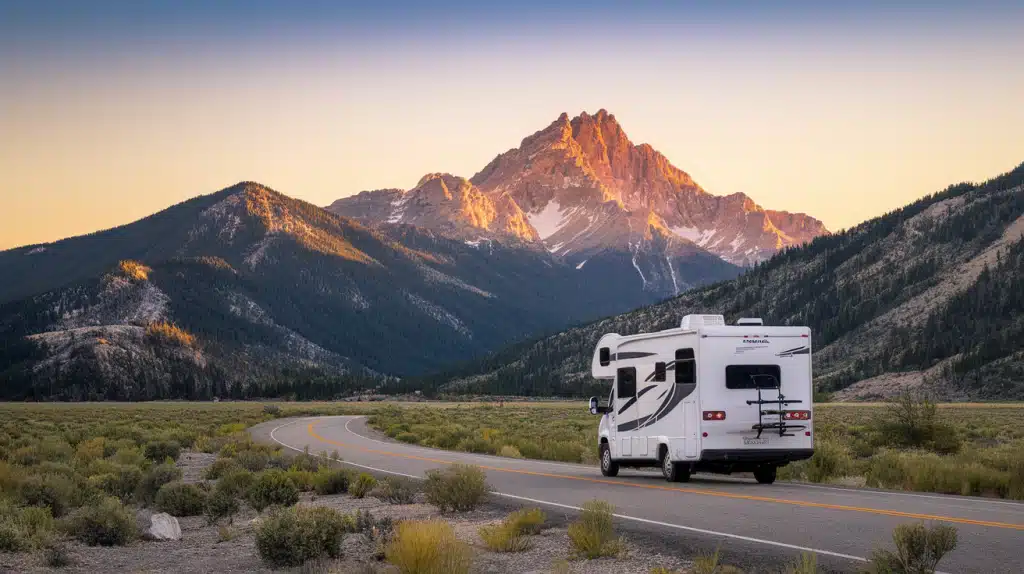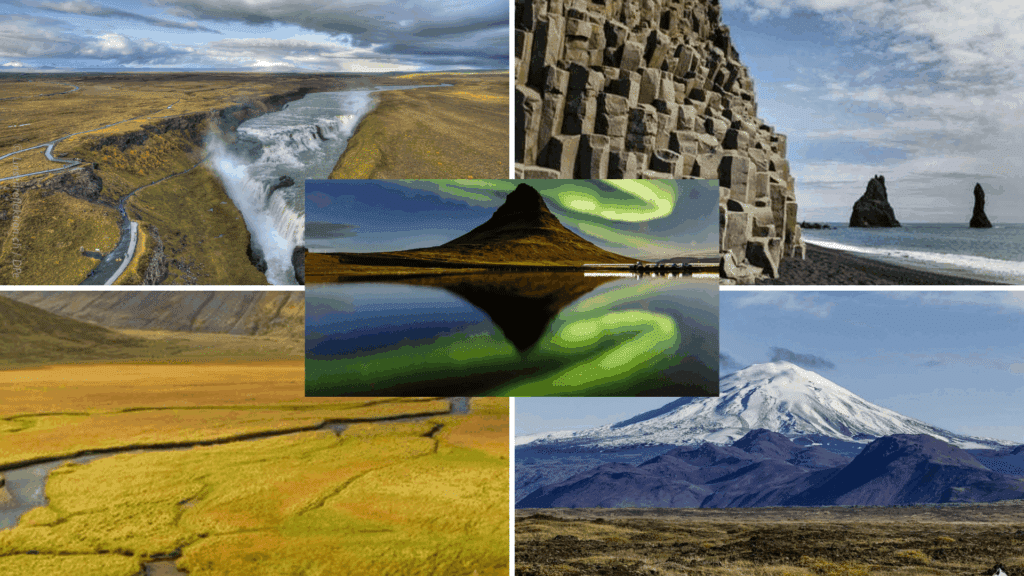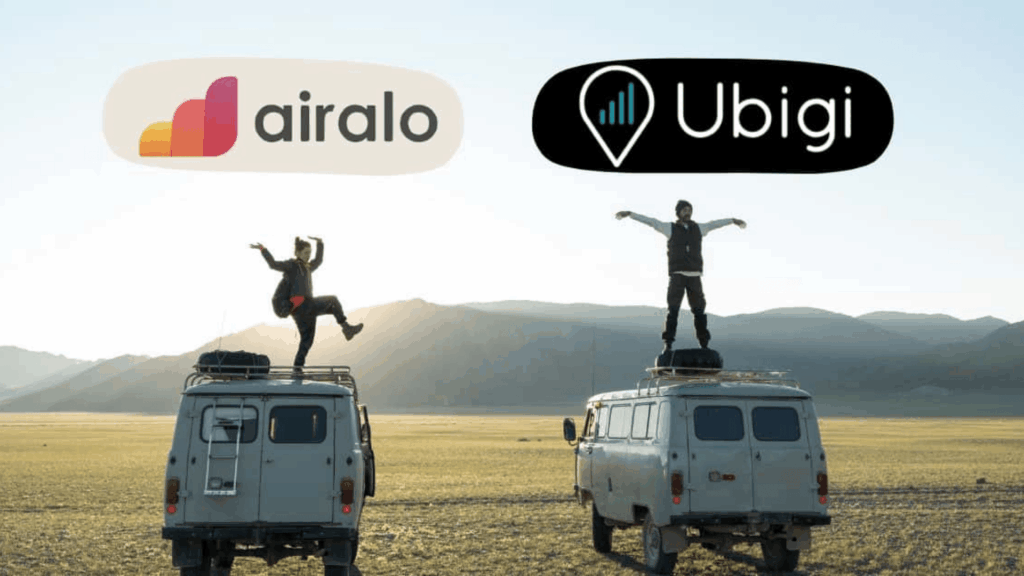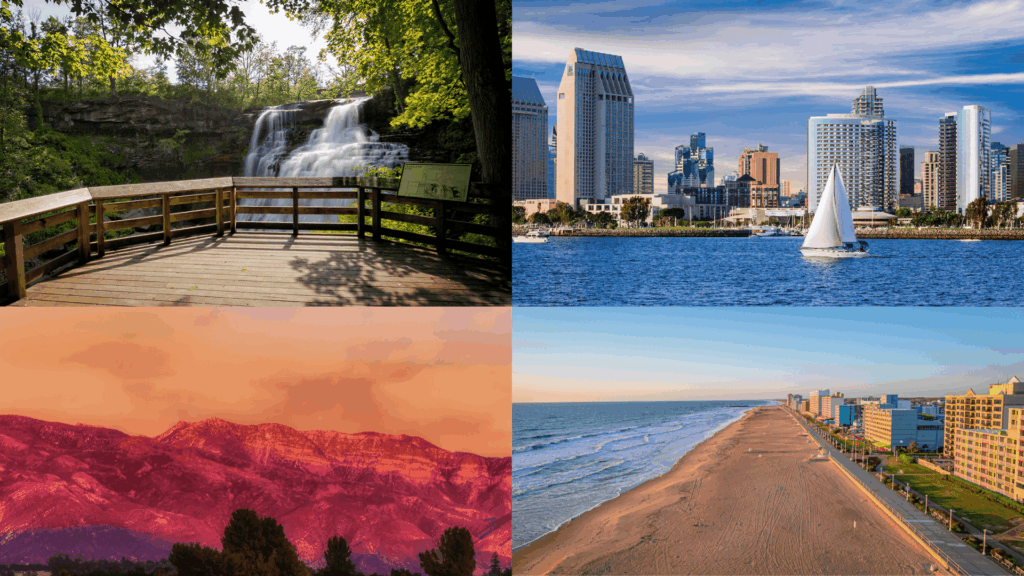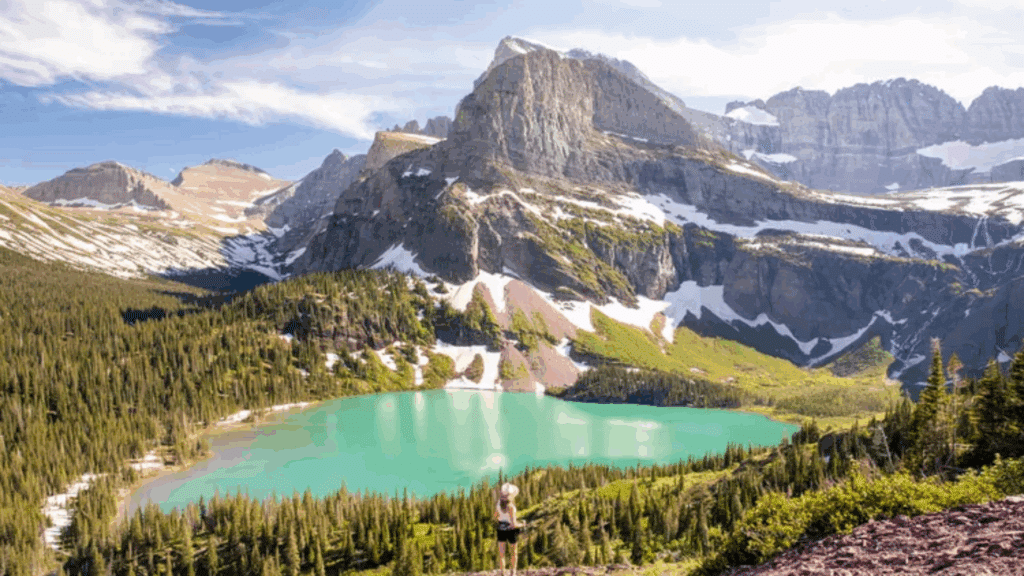Picture this: you wake up to sunrise over the Grand Canyon, make coffee in your own kitchen, then hit the road to explore Route 66’s quirky roadside attractions.
This is RV travel across America, the freedom to take your home anywhere while saving money on hotels.
Since 2020, millions of Americans have fallen in love with RV road trips. You can visit hidden gems that tour buses never reach, from Yellowstone’s geysers to Big Sur’s dramatic coastlines.
This complete guide covers everything you need to know: choosing the right RV, mapping scenic routes, finding great campgrounds, and living comfortably on the road.
Ready to start your cross-country adventure?
Why Choose RV Travel Across America?
RV (Recreational Vehicle) travel across America offers unmatched freedom to explore the country on your own terms.
You can wake up to mountain views, drive scenic routes at your own speed, and stop wherever catches your eye.
Unlike hotel-hopping, RV trips save money on lodging while giving you access to remote national parks and small towns most tourists never see.
This style of travel works perfectly for families seeking bonding time, couples wanting romantic getaways, and solo travelers craving independence.
Your home moves with you, making every sunrise a new front yard and every sunset a personal show.
How to Plan the Perfect RV Trip
Learn the essential steps, tools, and tips to map out a smooth, budget-friendly, and unforgettable RV adventure across America.
1. Choosing the Right RV
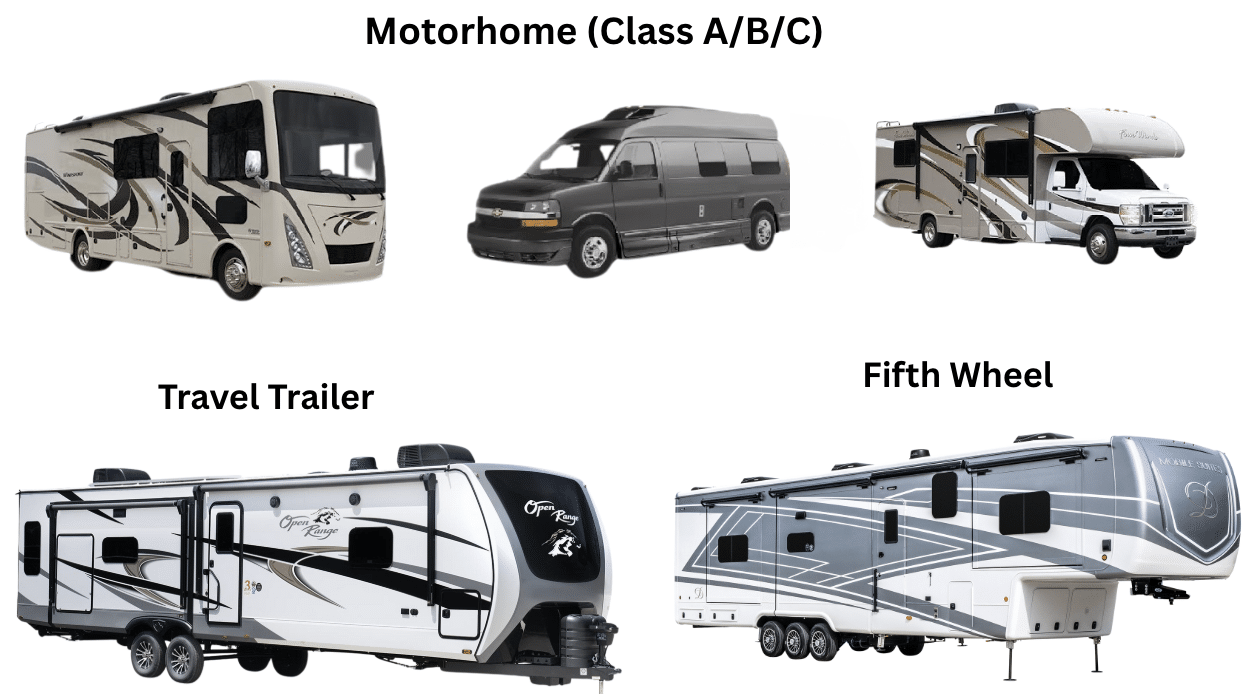
| RV Type | Pros | Cons | Best For |
|---|---|---|---|
| Motorhome (Class A/B/C) | No towing needed, easier to drive, bathroom always accessible | Higher fuel costs, can’t unhook for local trips, expensive to rent | First-time RVers, luxury seekers |
| Travel Trailer | Lower fuel costs, unhook for sightseeing, and more affordable | Requires towing experience, backing up challenges | Experienced drivers, budget-conscious |
| Fifth Wheel | More living space, stable towing, residential feel | Needs a pickup truck, harder to maneuver | Full-time RVers, long trips |
Renting vs. Buying: Rent if this is your first cross-country trip or if you travel less than 3 weeks per year. Buy if you plan multiple long trips or want to customize your setup.
Essential Features for Long-Distance Travel: Reliable engine, adequate freshwater tank (40+ gallons), comfortable sleeping space, efficient heating/cooling system, and strong Wi-Fi booster for remote areas.
2. Mapping Your Route
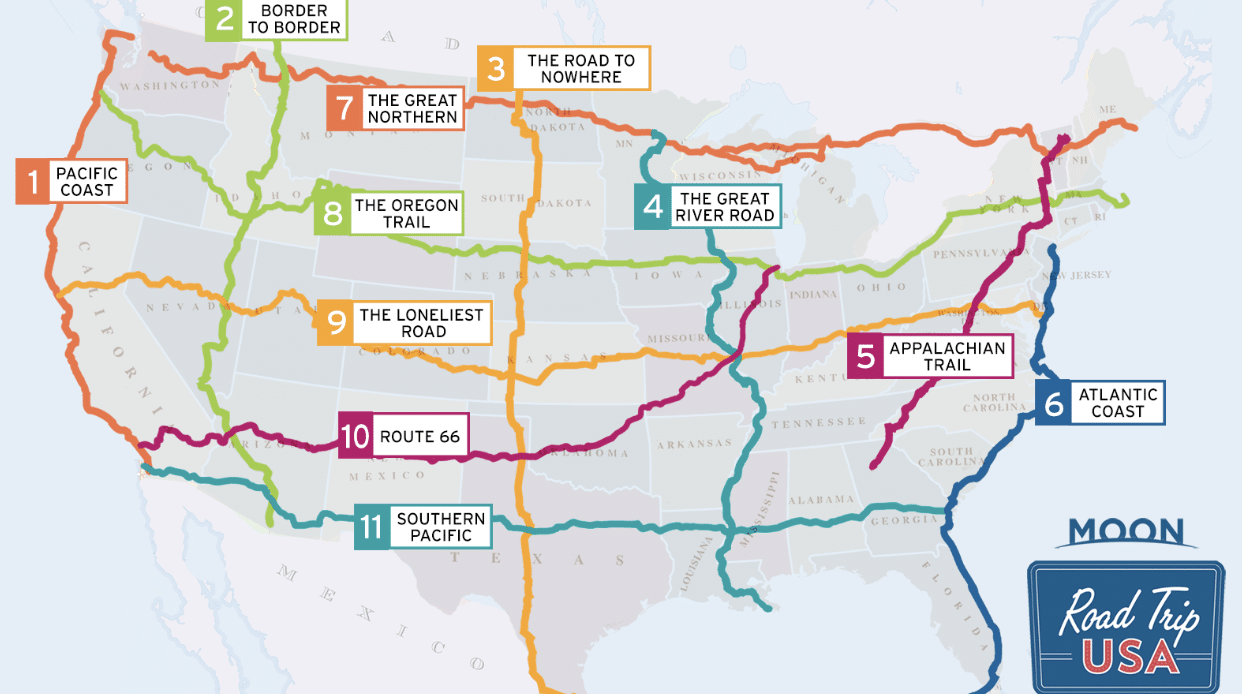
Source: roadtripusa.com
Use an all-in-one interactive map to plan RV-safe routes, combining interstates for speed with scenic byways for unforgettable detours. Plot must-see spots, campgrounds, and hidden gems all in one place.
Use apps like Roadtrippers, GaiaGPS, and Campendium to find routes and campsites. RV-specific GPS units prevent low-bridge disasters.
Take scenic byways for stunning views and cultural stops, but use interstates when covering long distances quickly or dealing with weather. Mix both for the perfect balance of efficiency and beauty.
3. Budgeting for the Journey
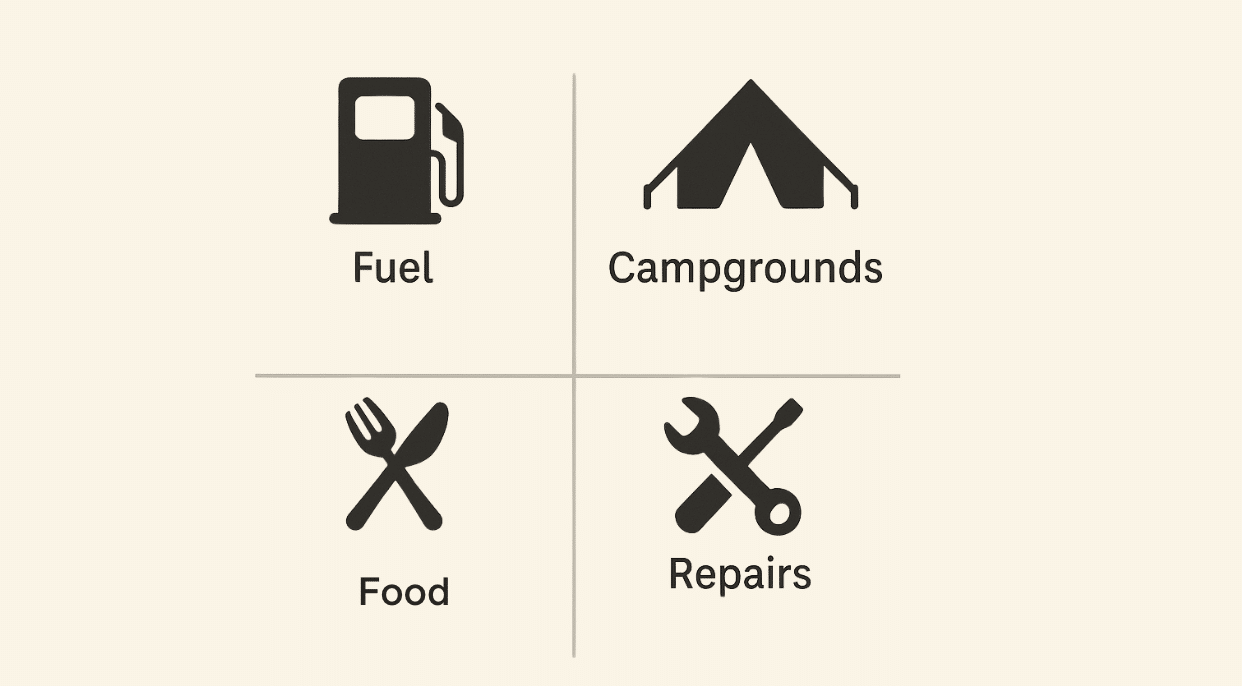
| Category | Cost Range | Tip |
|---|---|---|
| Fuel | $80–$150/day | Use GasBuddy for the cheapest fuel. |
| Campgrounds | $25–$65/night | Look for weekly discounts. |
| Food | $40–$80 (groceries) / $100+ dining out | Cook in the RV to save. |
| Repairs | $500–$2000 | Keep an emergency fund. |
| Tolls & Permits | $5–$50/day + $10–$30/year | Plan routes to avoid high tolls. |
Epic RV Stops You Can’t Miss in America
From iconic national parks to quirky roadside attractions, these must-visit stops will make your RV journey across the USA truly unforgettable.
1. Yellowstone National Park

Source: islandparkidaho.com
America’s first national park delivers geysers, hot springs, and incredible wildlife viewing. Old Faithful erupts every 90 minutes while Grand Prismatic Spring shows off rainbow colors.
Lamar Valley offers the best chance to spot bison, wolves, and bears. Visit late spring through early fall when all roads open, but book RV campsites months ahead.
2. Route 66
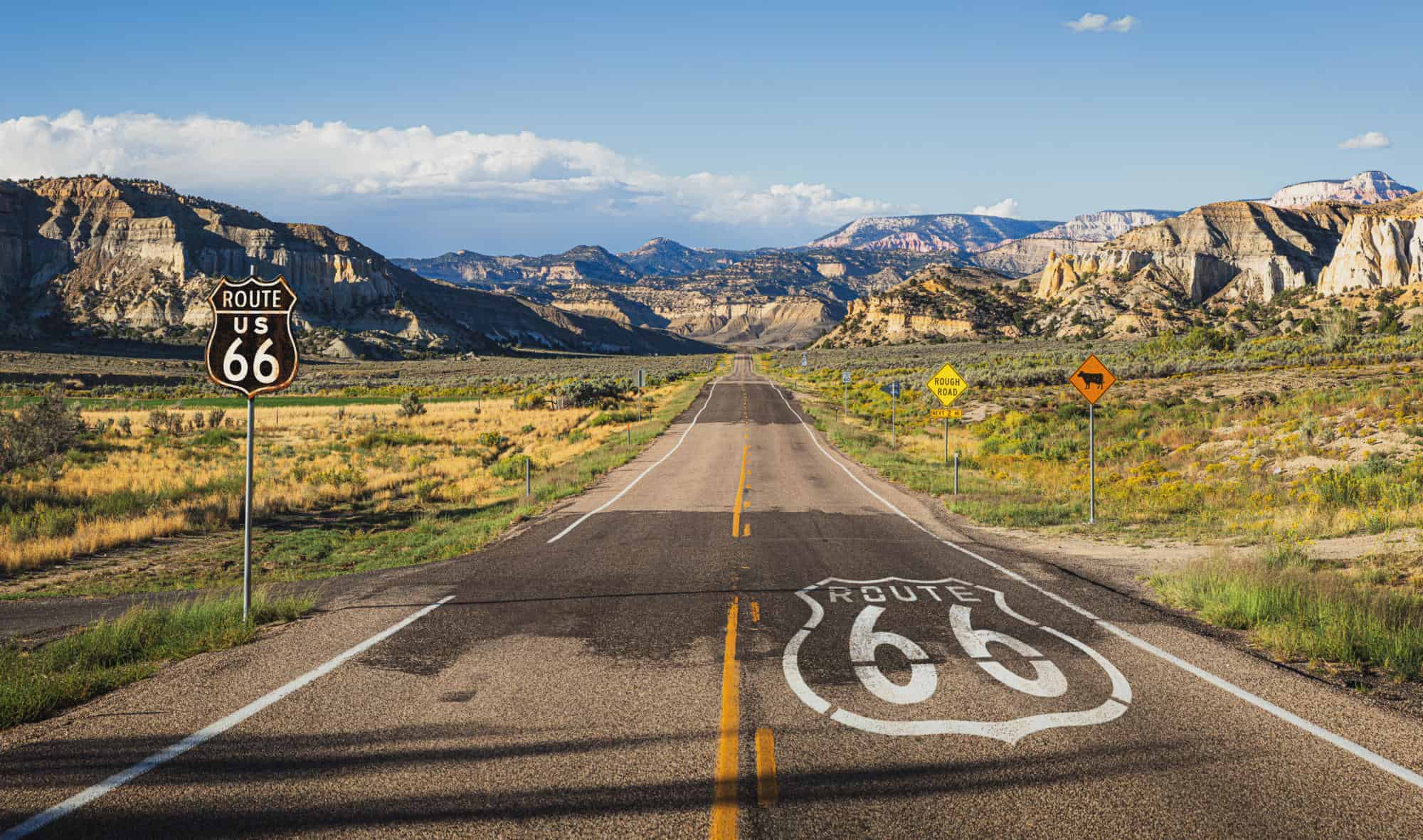
Source: csengineermag.com
This iconic 2,400-mile highway from Chicago to Santa Monica passes quirky attractions like Cadillac Ranch and Wigwam Motels.
Spring and fall offer the best weather for this cross-country drive. Plan fuel stops carefully since desert stretches have long gaps between gas stations.
3. Pacific Coast Highway, California
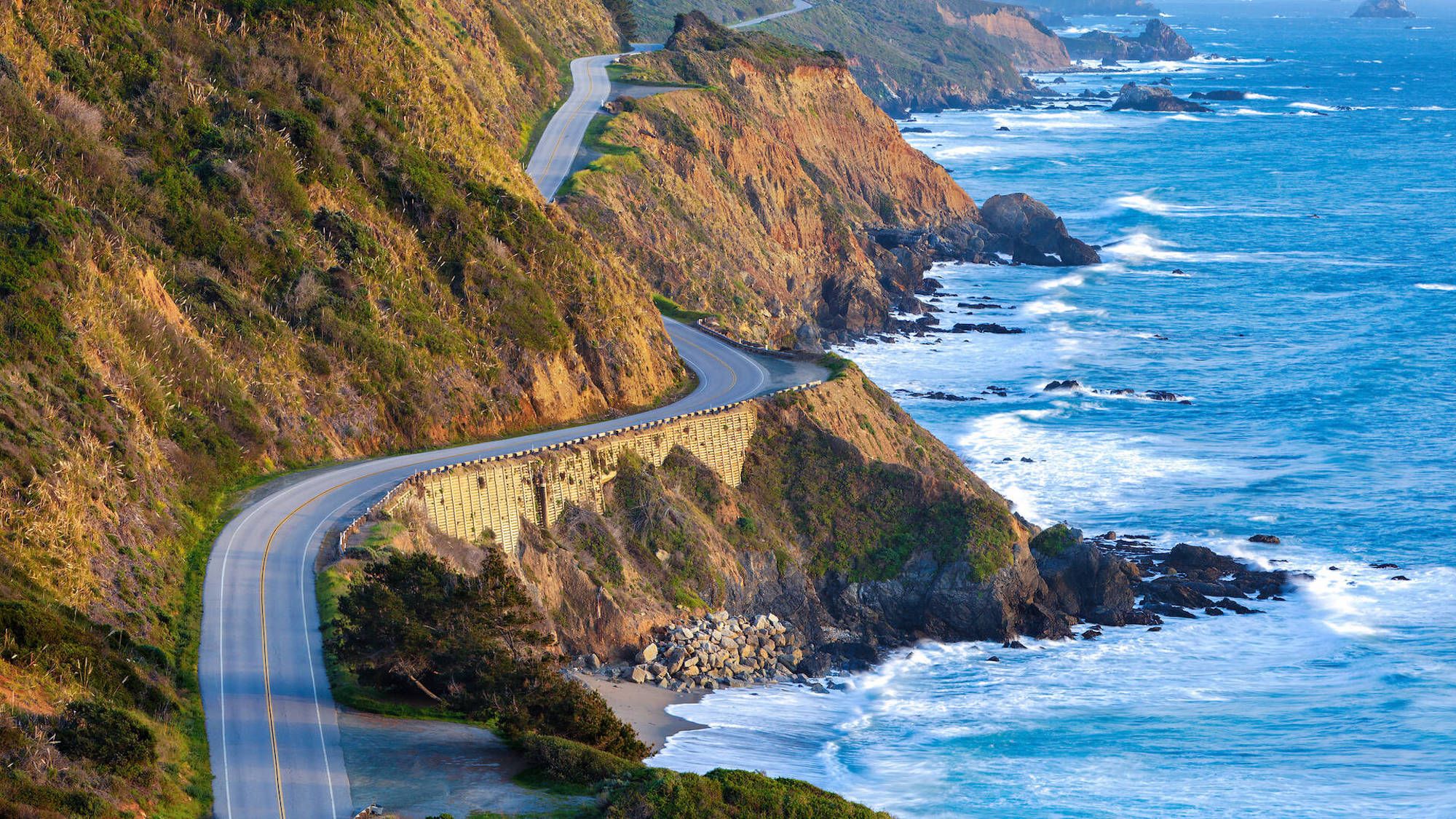
Source: roadrunner.travel
Highway 1 hugs California’s coast with stunning ocean views at every turn. Big Sur’s dramatic cliffs and Bixby Creek Bridge provide perfect photo spots.
Visit late spring or early fall to avoid summer fog. Take extra care with larger RVs on narrow, winding sections.
4. Great Smoky Mountains National Park
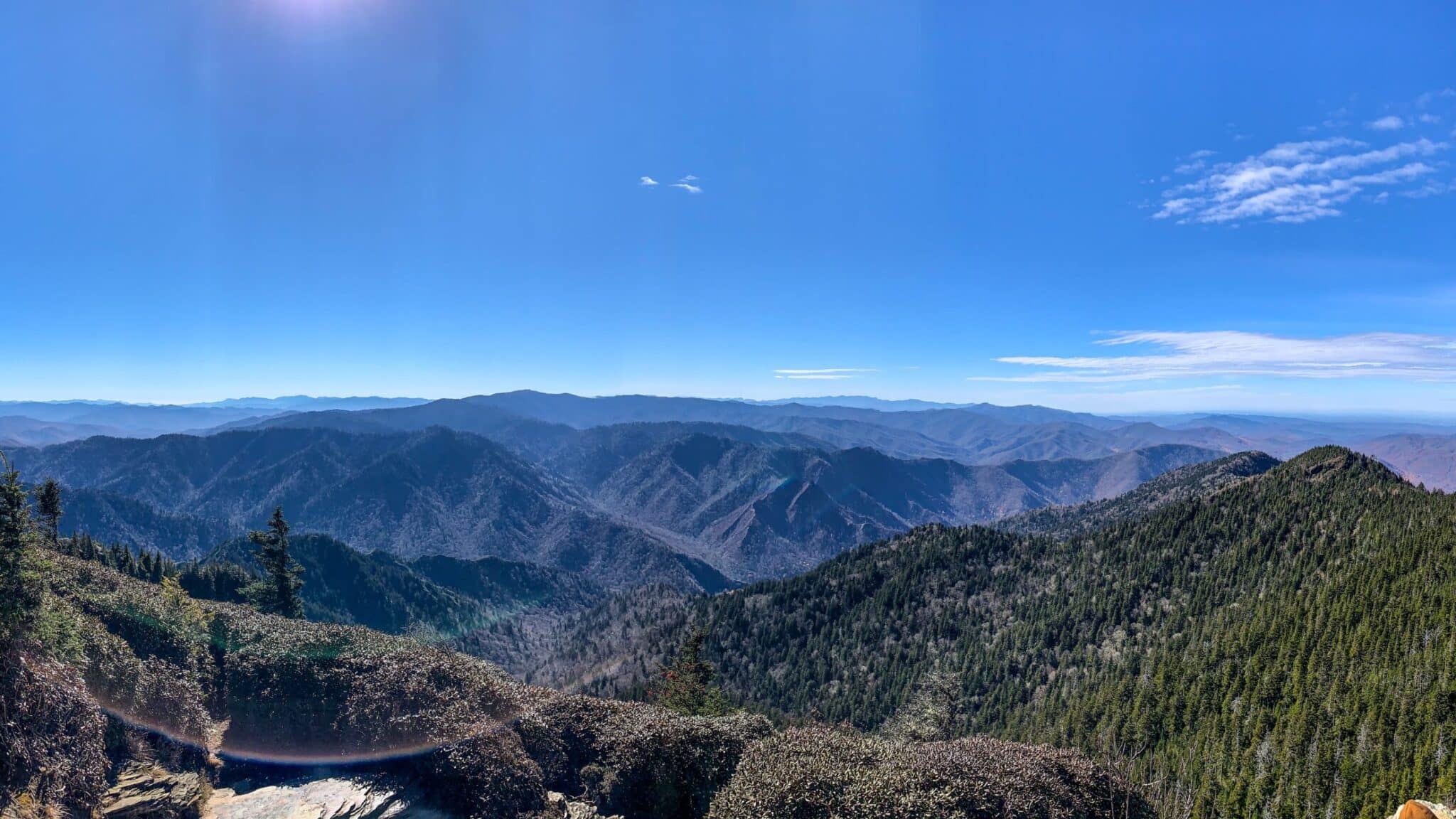
Source: en.wikipedia.org/wiki/Main_Page
These misty mountains offer lush forests and diverse wildlife. Clingmans Dome offers panoramic views, while Cades Cove’s 11-mile loop road is ideal for spotting wildlife.
Fall brings spectacular colors, and spring offers wildflower blooms. RV campgrounds are available, but no hookups inside the park.
Where to Camp on Your RV Road Trip
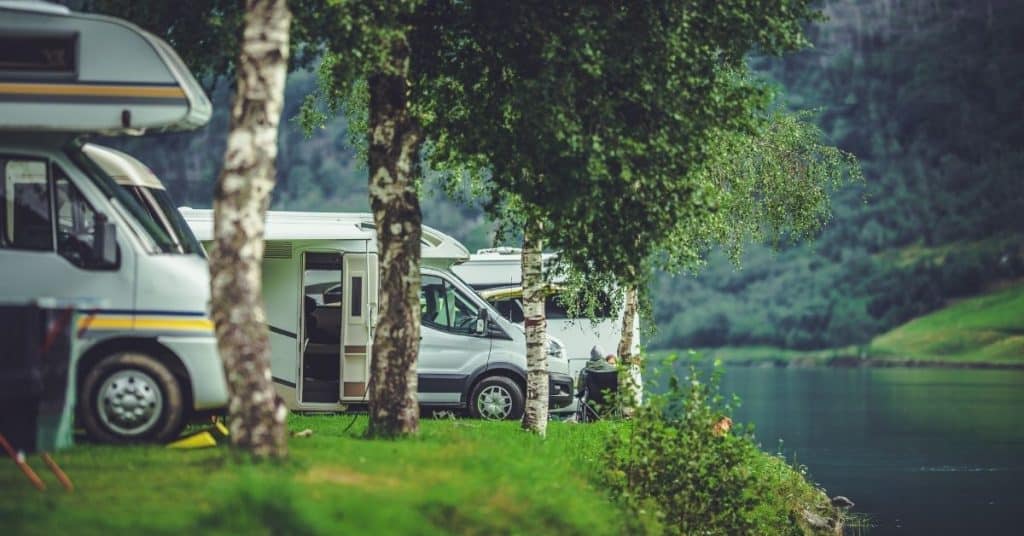
Find the best campgrounds, RV parks, and hidden boondocking spots to make every overnight stop as memorable as the journey itself.
1. Types of Campgrounds
Private RV Parks offer full hookups with electricity, water, and sewer connections, plus amenities like Wi-Fi, pools, and laundry facilities. These cost $30-80 per night but provide convenience and comfort for longer stays.
National and State Parks give you stunning natural settings with basic facilities, typically costing $15-35 nightly. Many lack full hookups but offer dump stations and fresh water fills. The trade-off for fewer amenities is unbeatable scenery and wildlife viewing.
Boondocking means camping without hookups in remote locations, often free on public lands managed by the Bureau of Land Management or the Forest Service. You’ll rely on your RV’s batteries and water tanks while enjoying complete solitude under star-filled skies.
2. Booking Ahead During Peak Seasons
Popular destinations fill up months in advance, especially during summer and fall foliage seasons.
Reserve national park campsites exactly 14-30 days before your arrival date when most systems release new availability.
Use multiple booking platforms like Recreation.gov, ReserveAmerica, and KOA simultaneously. Have backup plans ready since cancellations happen frequently, and check sites daily for last-minute openings.
3. Finding Free or Low-Cost Overnight Spots
Download apps like Campendium, FreeRoam, and iOverlander to locate free camping spots shared by fellow travelers. Walmart parking lots often allow overnight stays, but always ask permission first.
Many truck stops welcome RV travelers for $10-20 with access to showers and restaurants. Rest areas provide short-term stops, though some prohibit overnight parking.
Always follow posted rules and practice good etiquette to keep these options available for future travelers.
Life on the Road in Your RV
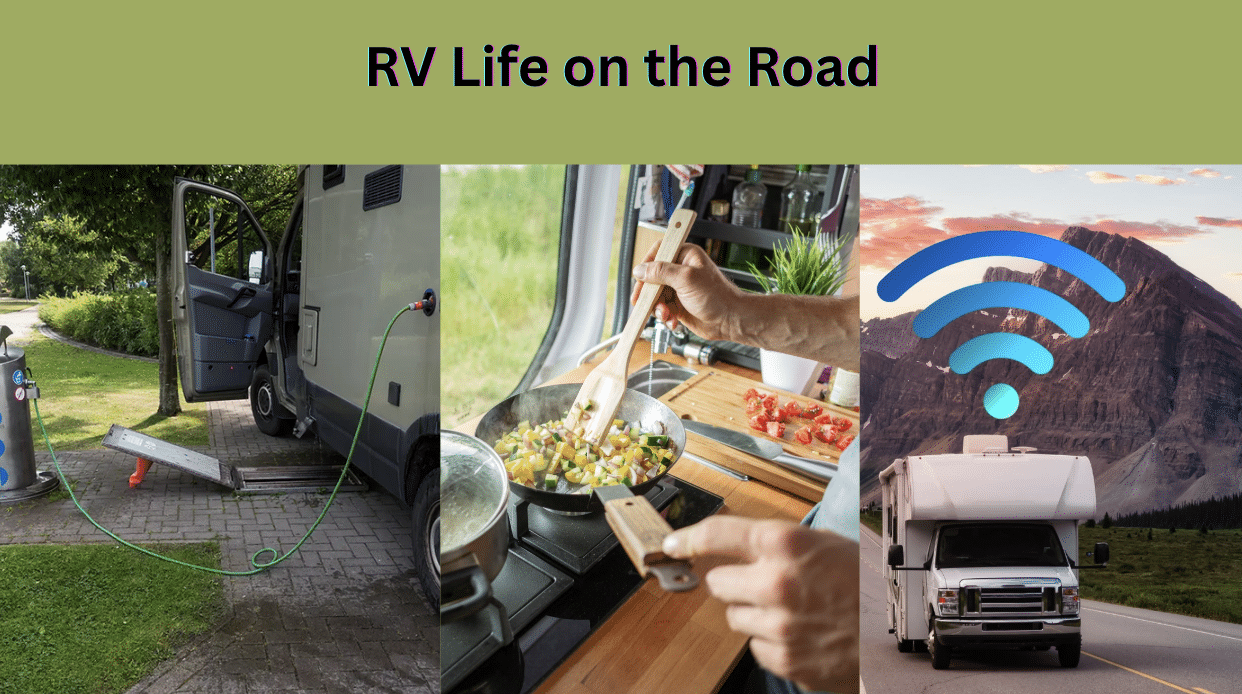
Master the art of living on wheels with tips for cooking, staying connected, managing utilities, and keeping your travels safe and stress-free.
1. Managing Waste and Water Tanks
Check tank levels daily to avoid messy overflows. Empty black tanks first, then gray tanks to rinse your hose clean.
Use enzyme treatments weekly to break down waste and conserve water with quick showers. Fill fresh water only from trusted sources and sanitize tanks monthly with diluted bleach.
2. Cooking and Meal Prep in Small Spaces
Plan one-pot meals and sheet pan dinners to minimize cleanup. Stock versatile ingredients like pasta, rice, and canned goods that store easily.
Use collapsible containers and magnetic organizers to maximize space. Prep ingredients while driving so dinner’s ready when you park.
3. Staying Connected: Wi-Fi & Cell Signal Hacks
Install a cellular booster for weak signal areas and carry unlimited data plans from multiple carriers. Position antennas away from metal objects and use libraries or coffee shops for free internet.
Download offline maps and entertainment before entering remote zones.
4. Safety and Security Tips While Traveling
Trust your gut and leave unsafe locations immediately. Install motion lights and use wheel locks when parked long-term.
Keep curtains closed at night and share your location with family. Carry emergency supplies including a first aid kit, a fire extinguisher, and basic tools.
The Bottom Line
Your cross-country RV trip across America awaits. From choosing the perfect RV to finding hidden camping gems, you now have the tools to plan an unforgettable road trip.
Remember, the best part isn’t just reaching famous destinations, it’s the small-town diners, roadside attractions, and conversations with fellow travelers you’ll meet along the way.
RV travel gives you freedom that hotels and flights simply can’t match. You control the schedule, choose your views, and create memories at your own pace.
Start small with a weekend trip to test your skills, then plan that epic cross-country adventure you’ve been dreaming about.
The open road is calling. Which destination will you visit first? Share your RV travel plans in the comments below, and don’t forget to bookmark this guide for your upcoming trip!
Frequently Asked Questions
What Is The 3-3-3 Rule For RVing?
Drive no more than 300 miles, arrive by 3 PM, and stay at least 3 days to avoid travel fatigue and enjoy each destination.
What Is The 4 4 4 Rule For RV?
Travel maximum 4 hours, cover 400 miles, and arrive by 4 PM to maintain a relaxed pace and safe driving schedule.
What Is The 2 2 2 Rule For RV?
Stay at least 2 nights at each campground, arrive by 2 PM, and keep driving days under 2 hours for stress-free travel.
What Is The RV 10-Year Rule?
Many upscale RV parks and campgrounds don’t accept RVs older than 10 years due to appearance standards and insurance requirements.

